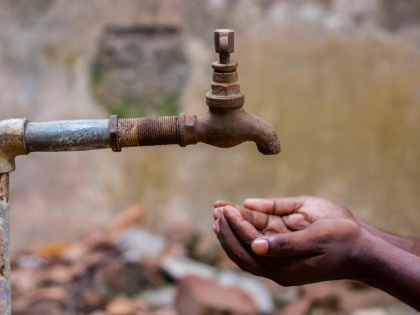Water Crisis In Amravati: Residents Struggle as Tanker Prices Soar and Tap Supply Remains Unreliable
By Lokmat English Desk | Updated: February 19, 2025 12:33 IST2025-02-19T12:32:39+5:302025-02-19T12:33:08+5:30
Amravati is rapidly expanding but tap water has yet to reach many new colonies. As a result, residents in ...

Water Crisis In Amravati: Residents Struggle as Tanker Prices Soar and Tap Supply Remains Unreliable
Amravati is rapidly expanding but tap water has yet to reach many new colonies. As a result, residents in these areas rely on borewell water for their drinking needs. Urban drinking water is sourced from the Upper Wardha Dam, creating a disparity in supply—some areas receive ample water, while others experience low pressure. In rural regions, many villagers depend on tanker water, which comes at a significant cost. Without a reliable piped water supply, residents of new urban settlements often travel to nearby areas to collect drinking water.
The cost of tanker water has surged since February, with a 2,000-liter tanker now priced between Rs 1,000 and Rs 1,500. Prices increase for deliveries to distant locations, and service delays are common. The situation worsens in rural areas, particularly in Melghat and other talukas, where water shortages intensify during the summer, leading to increased expenses for residents.
As temperatures rise, the demand for electricity will also surges due to widespread use of cooling appliances, resulting in frequent power outages. This exacerbates the water crisis, as electricity failures often coincide with scheduled water supply times, preventing residents from collecting or pumping water.
In new urban settlements, the demand for water is increasing. Despite paying for tap water, residents continue to struggle with unreliable supply. Rural areas face even greater drinking water shortages compared to urban areas, where water is provided only once every two days. Many households use Tullu pumps to extract water, but the local municipal authority, Majipra, has taken no significant action to address these persistent issues.
The construction of high-rise buildings, ranging from five to eight stories, has further aggravated the water crisis. Borewells are being drilled just 15 feet apart, causing rapid depletion of groundwater levels and increasing the risk of land subsidence. With summer already making its presence felt, the urgency for a sustainable water management solution is greater than ever. Residents continue to demand a reliable and equitable water supply, but unless immediate action is taken, the crisis is likely to worsen in the coming months.
Open in app